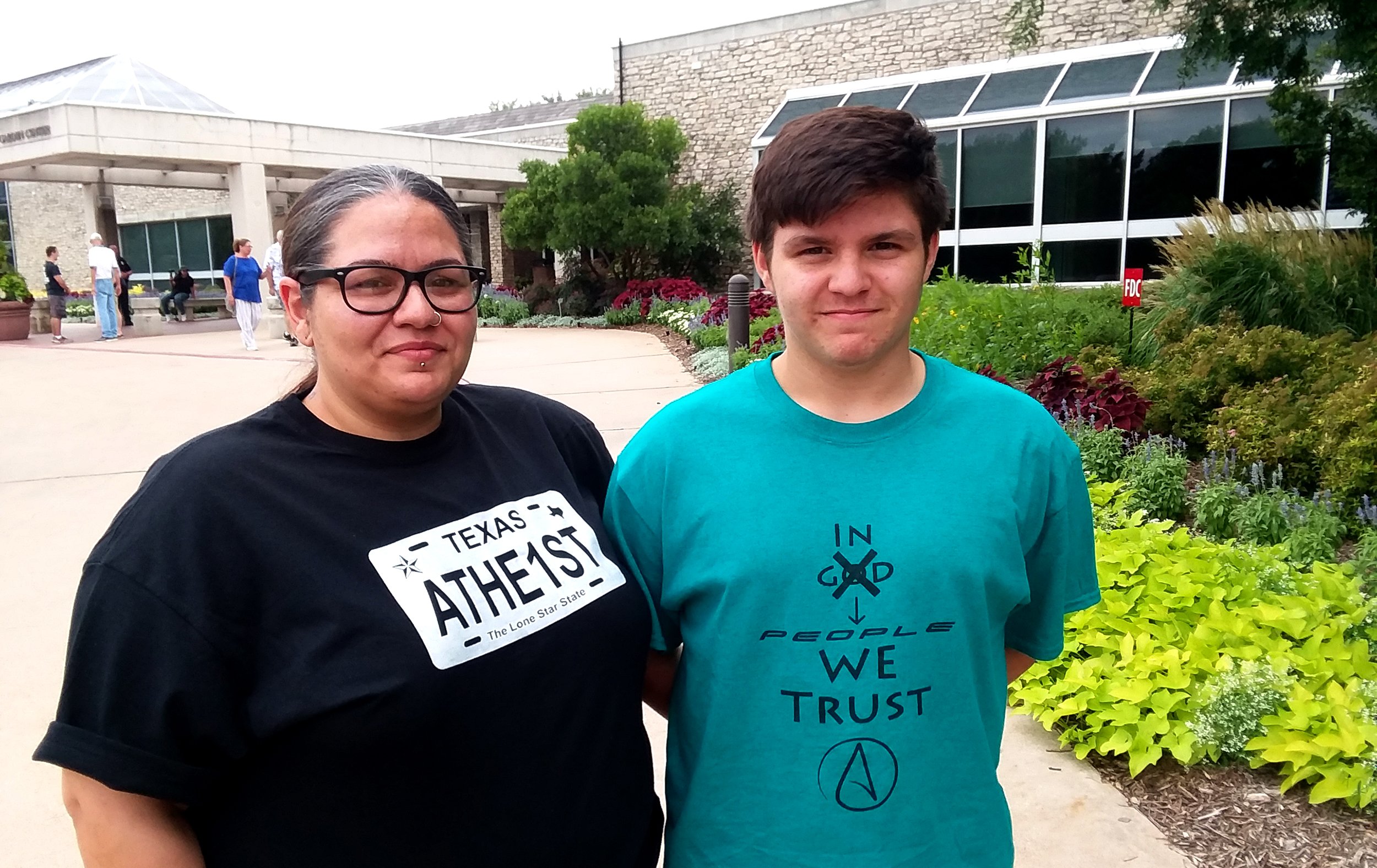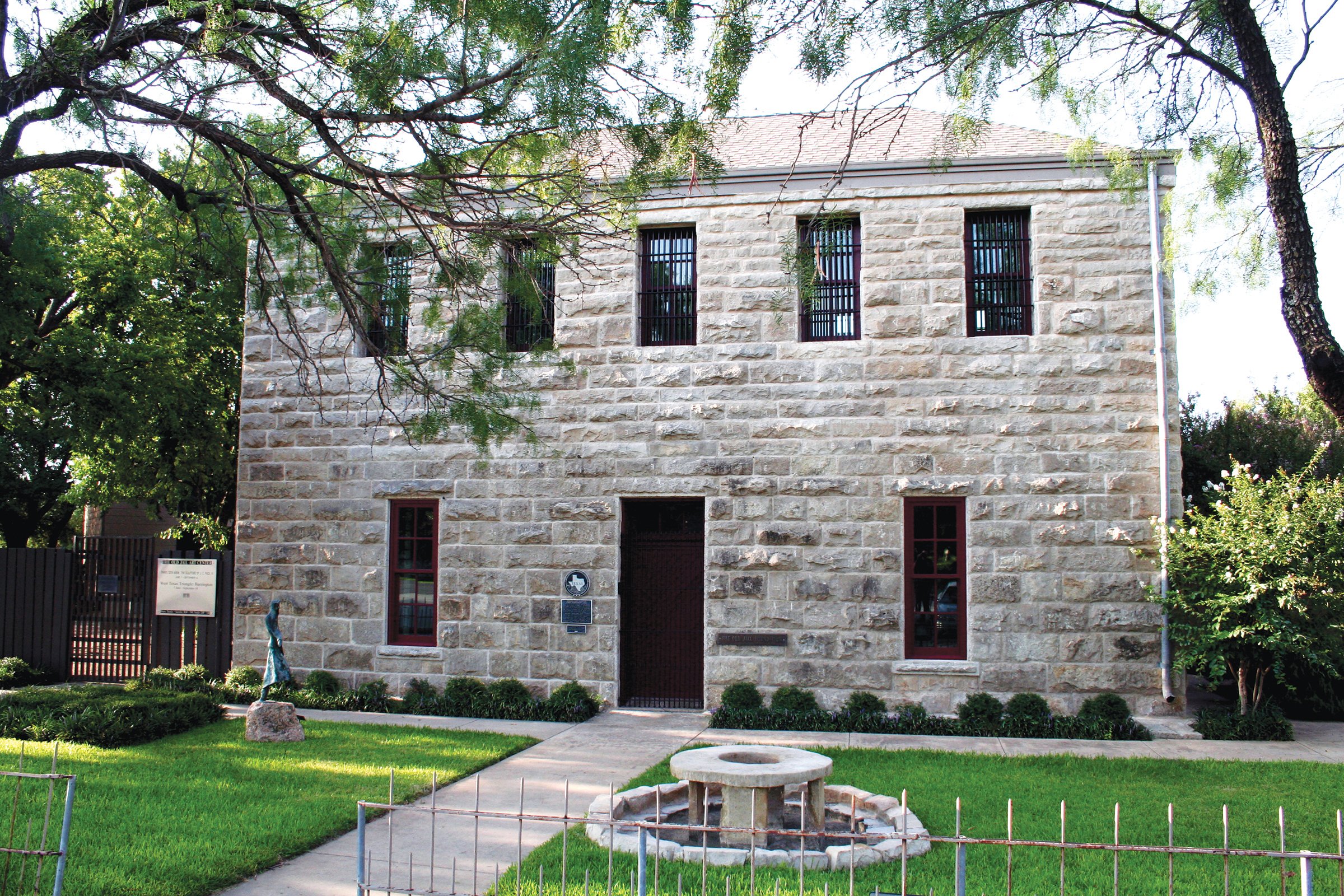
Little Arthouse on the Prairie
In tiny Albany, Texas, you can’t shop at Walmart or buy a beer, but you can see one of the state’s best and quirkiest art collections.
–
by Christopher Collins
July 31, 2019
Two blocks east of the sole stoplight on Main Street, just past the Icehouse Restaurant and the First Christian Church, that’s where you’ll find it: an unassuming, two-story limestone building veiled in a curtain of mesquite trees. A passing motorist could be forgiven for zooming right on by.
But through a set of glass doors, the Old Jail Art Center, so named for the old-timey county jail that serves as its anchor, reveals itself to be a 17,000-square-foot compound of polished stone floors, high ceilings and painstakingly curated galleries. There’s also an in-house woodworking shop and a reading room with more than 3,000 art books and periodicals. The center is notably distinct from the slice of West Central Texas immediately outside its walls, where the tiny town of Albany and the sprawling ranches that surround it appear a little rough around the edges. Down the street from the museum, there’s a Dollar General with 19th-century metal hooks still in the sidewalk out front—a hitching post for shoppers inclined to travel to the store by horseback.
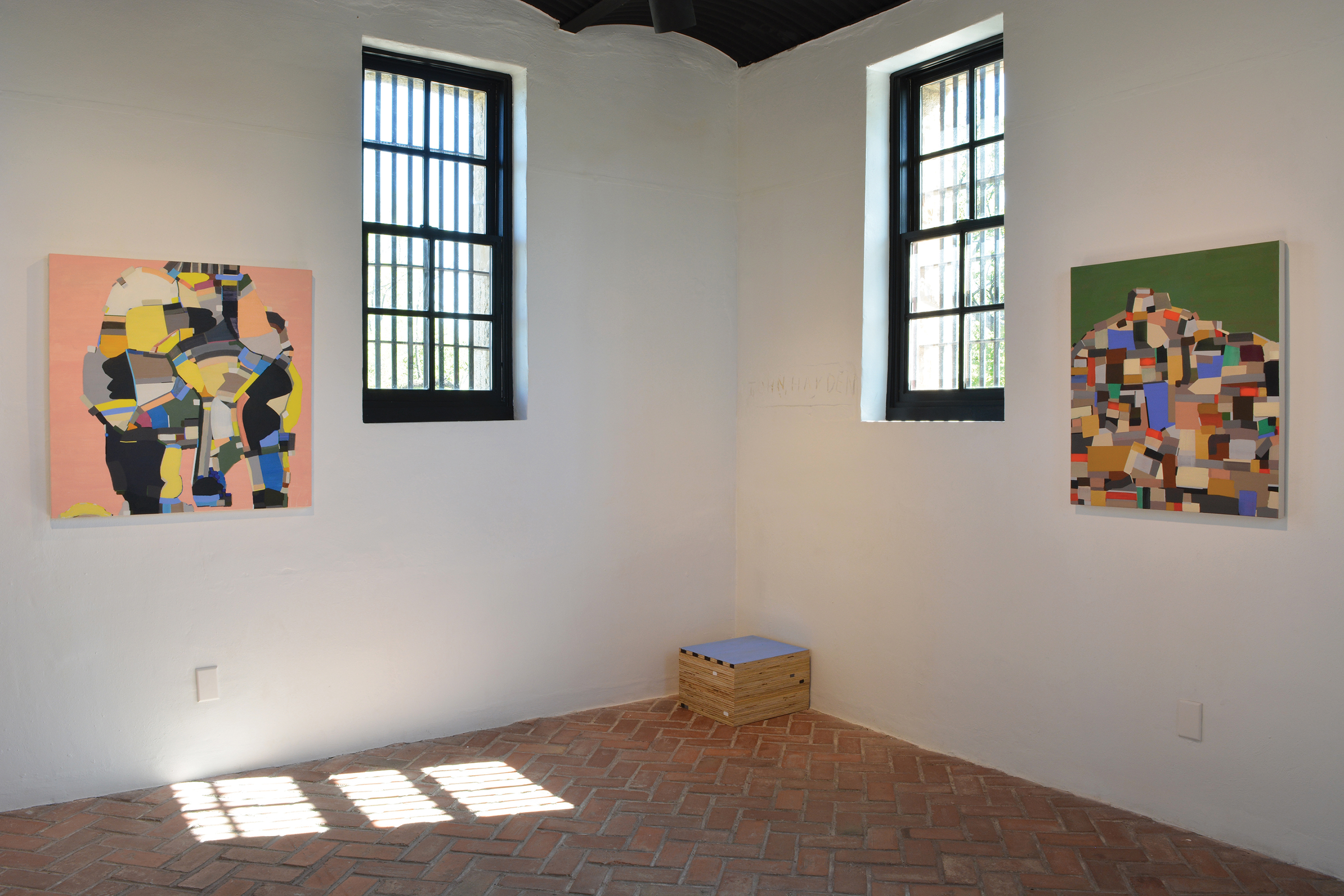
Steve Waller, a mustachioed rancher who runs a bank in town and chairs the museum’s board, deploys a tried-and-true pitch when he meets someone who’s never visited the Old Jail Art Center. He hands them the museum’s business card, emblazoned with the names of a few of the artists whose work is housed here: Goya, Modigliani, Picasso, Rembrandt, Renoir and others. “Then I tell ’em, ‘In addition to those guys, we’ve got some famous people here, too!’” Waller says.
He eagerly relates the fact that in 2013, the Tate Modern in London asked to borrow Paul Klee’s “Der Weg Ins Blaue” from the museum’s permanent collection. Board members and a handful of other residents flew to England for the opening. “We took 1 percent of the whole town to London!” Waller says.
Alongside the big-name painters, the museum boasts one of the best Asian art collections in the state, from 2,200-year-old Chinese tomb figures to Japanese ceramics. There’s also a sculpture courtyard with more than 20 pieces. Inside the old jail structure, visitors pass through a wrought-iron gate and climb a tight stairway to reach two rooms once used for solitary confinement and general holding. Now they host the Cell Series, in which contemporary artists create site-specific works.
The center is an unexpected—and, at least outside the insular fine art community, still largely unknown—gem in a region where outlaws once filled saloons with gunsmoke and the state’s official herd of longhorn cattle still grazes. How did Albany, a town of 2,000 two and a half hours west of Dallas, build one of the best and quirkiest art collections in the state?
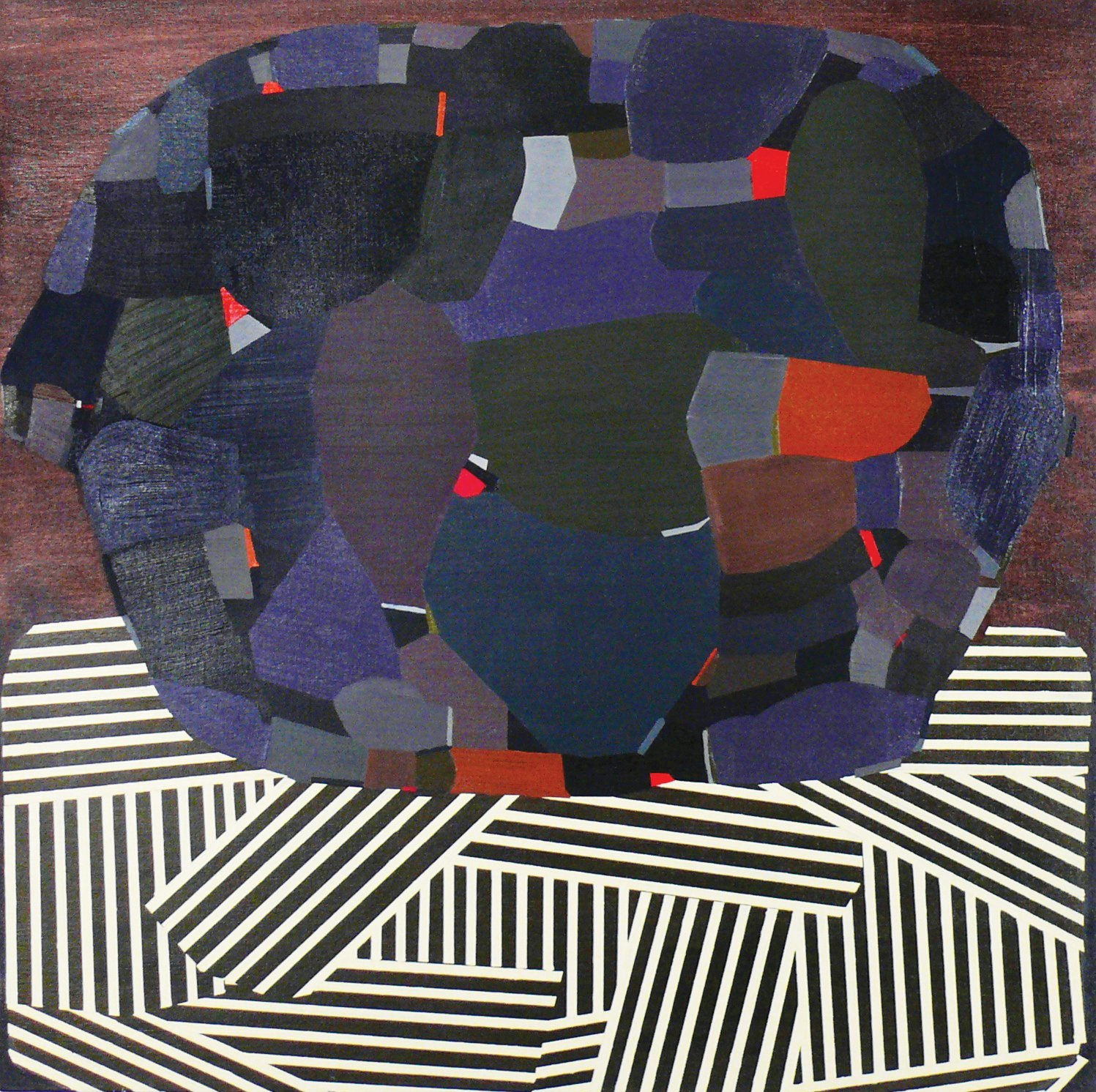
Albany’s precursor was Fort Griffin, a military installation erected in 1867 to protect settlers from Kiowa and Comanche raids. The adjacent town of Griffin—the most populous city between Dallas and El Paso at the time—was a place where seeing a gunfight was about as likely as spotting a cow pie on the Goodnight-Loving Trail. Infamous gunslingers Wyatt Earp and Doc Holliday first met here. “There were buffalo hunters, bullwhackers, soldiers, cowpunchers, Indians, gamblers, toughs, refined business men and fallen women mingling in one common herd on the streets and in the business house,” wrote Don H. Biggers in his turn-of-the-century book, Shackelford County Sketches.
Put simply: The place was wild as all get-out.
Murderers, horse thieves, gamblers and prostitutes were so numerous that the settlers of Albany, just south of the fort, set about creating some law and order. One of the first orders of business was to build a jail: a modern, limestone brick structure that cost taxpayers $9,000 and opened in 1878. It was a step up from the county’s previous jail, a makeshift wooden shanty whose security was so lax that John Larn, a former sheriff accused of rustling cattle, was shot dead by vigilantes while awaiting trial.
“It’s almost shocking when people first come into the museum” and see what’s actually there.
Little is known about the inmates who were once locked away here. One of the few confirmed prisoners, John Hayden, was an African American cook at a local hotel who was hauled in on a murder charge. He was kept in solitary confinement for 18 months—he carved his name into the room’s north wall—before a jury found him not guilty. John Selman, a deputy sheriff accused of rustling cattle with Larn, was also locked up in the jail until corrupt guards helped him escape. Selman went on the lam and now is best known for shooting John Wesley Hardin in the back of the head in El Paso.
Shuttered in 1929 in favor of a newer jail a block away, the building sat vacant for a decade. Then Robert Nail Jr., a ranching scion and Princeton graduate who hung out with the likes of Jimmy Stewart and Thornton Wilder in New York before returning to Albany, bought it for $25 to use as a writing studio. Nail, a playwright and theater director, volunteered for military service in World War II, writing radio programs to drum up support for war bonds. After he died, his nephew Reilly Nail and cousin Bill Bomar took over the old jail, stowing their prodigious Asian art collection there until they decided to open it to the public as an art museum in 1980.
The museum has since expanded four times, evolving from a simple sampling of Asian art in a cramped county lockup to a not-so-little arthouse on the prairie. It now counts seven full-time employees, a $13 million endowment and 12,000 annual visitors. One thing hasn’t changed: Donations from wealthy oil and ranching families, as well as from art aficionados statewide, still sustain the museum. The newest addition honors Sallie Reynolds Matthews, a frontierswoman whose descendants today manage cattle on their nearby 50,000-acre ranch.
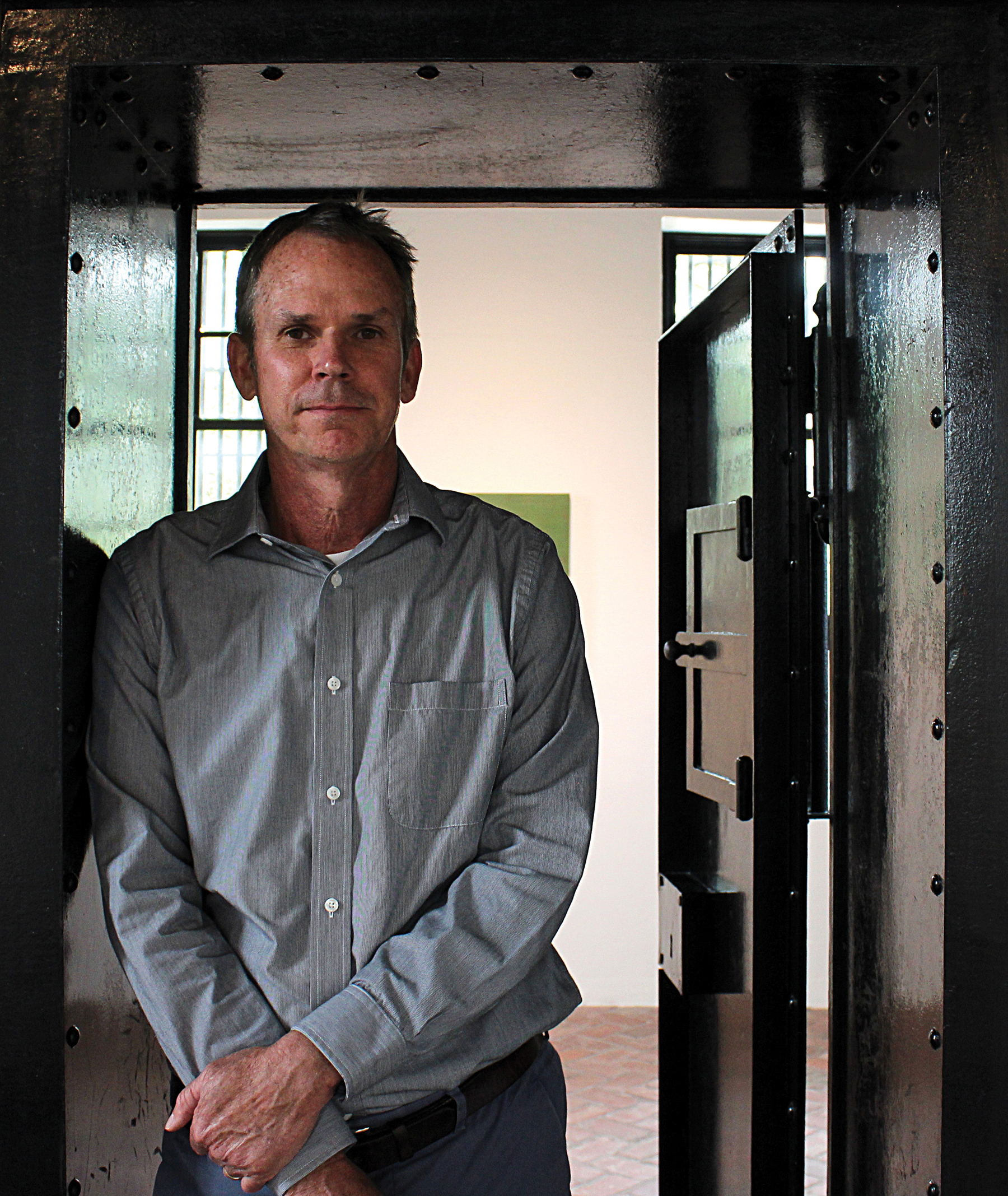
The jail today looks much as it originally did, down to the bars on the second-story windows. Some cosmetic updates have been made, of course: The walls and doors have been repainted, and a fire extinguisher hangs on a wall near a stairwell. Regardless, the space has retained its solemn, contemplative mood. This often takes visitors by surprise, said Executive Director Patrick Kelly.
“They think they’re going to see a bunch of old Western art or something like that,” said Kelly, who’s led the museum since 2016. “It’s almost shocking when people first come into the museum” and see what’s actually there.
“You want to change with the times appropriately while you honor the past.”
Take, for example, A New Codex by René Treviño, a Mexican American artist born in Kingsville. Open through August 24, Treviño’s show is in sharp contrast to the museum’s extensive collection of pre-Columbian artifacts. In a small gallery on the building’s ground floor, Aztec figures wear rainbow-colored hair and wield daggers made of unicorn horns. Bronze skulls sporting bedazzled sunglasses stare back at viewers, and rubber beetles affixed with plastic jewelry climb the walls.
It’s fitting that a contemporary museum attached to a frontier-era jail would specialize in contradiction and juxtaposition, past and present. This theme carries beyond the museum’s walls to the town of Albany, where history mingles with modernity, but the two rarely clash. Though more buildings on the downtown square are adorned with a historical marker than aren’t, none are in disrepair. In fact, they’re occupied and open for business: Storefronts for former grocery stores and beauty salons are now gift shops and boutiques.
“In Albany, we don’t rebuild—we redecorate,” said Glenna Green, the owner of a clothing store that was once a barbershop.
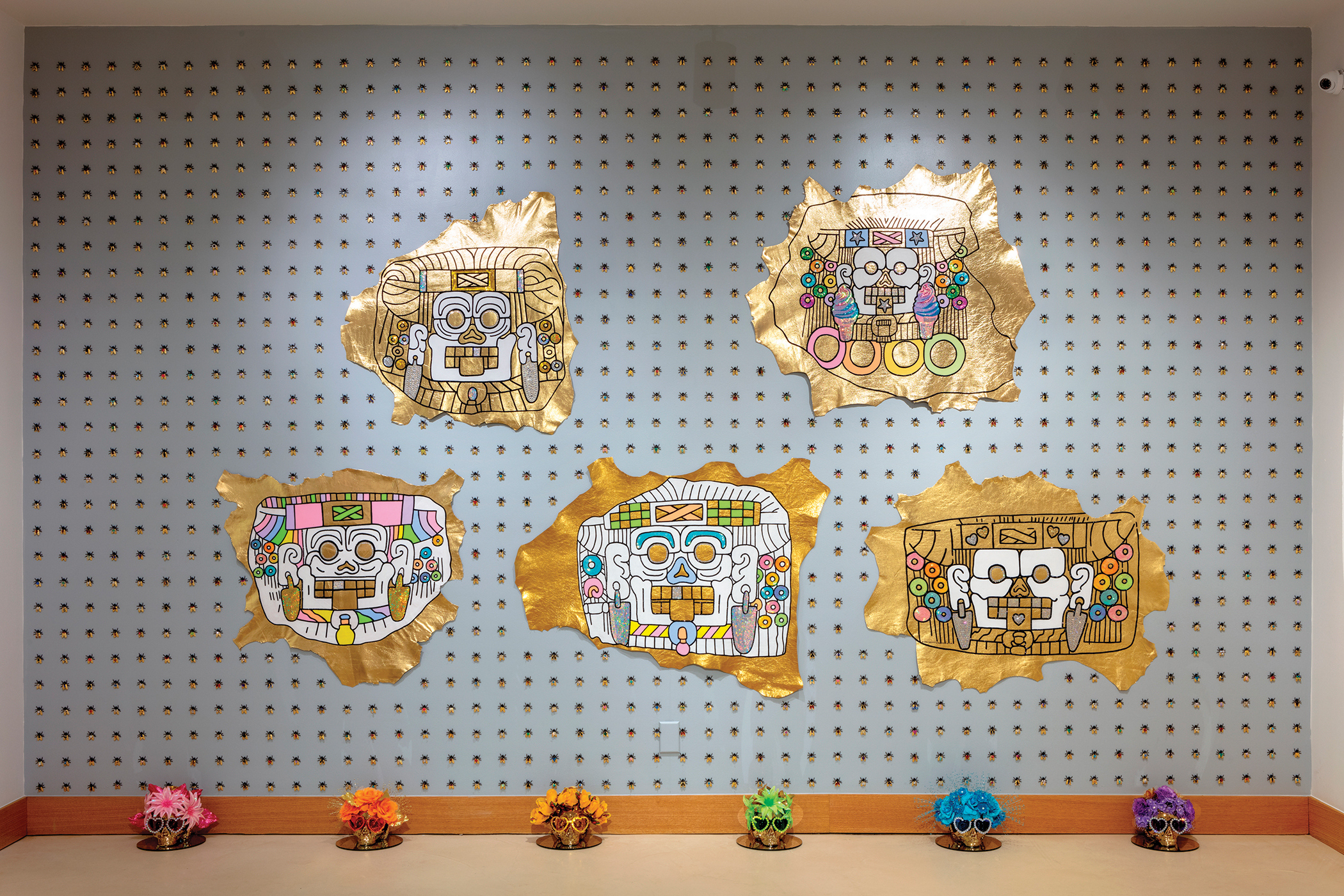
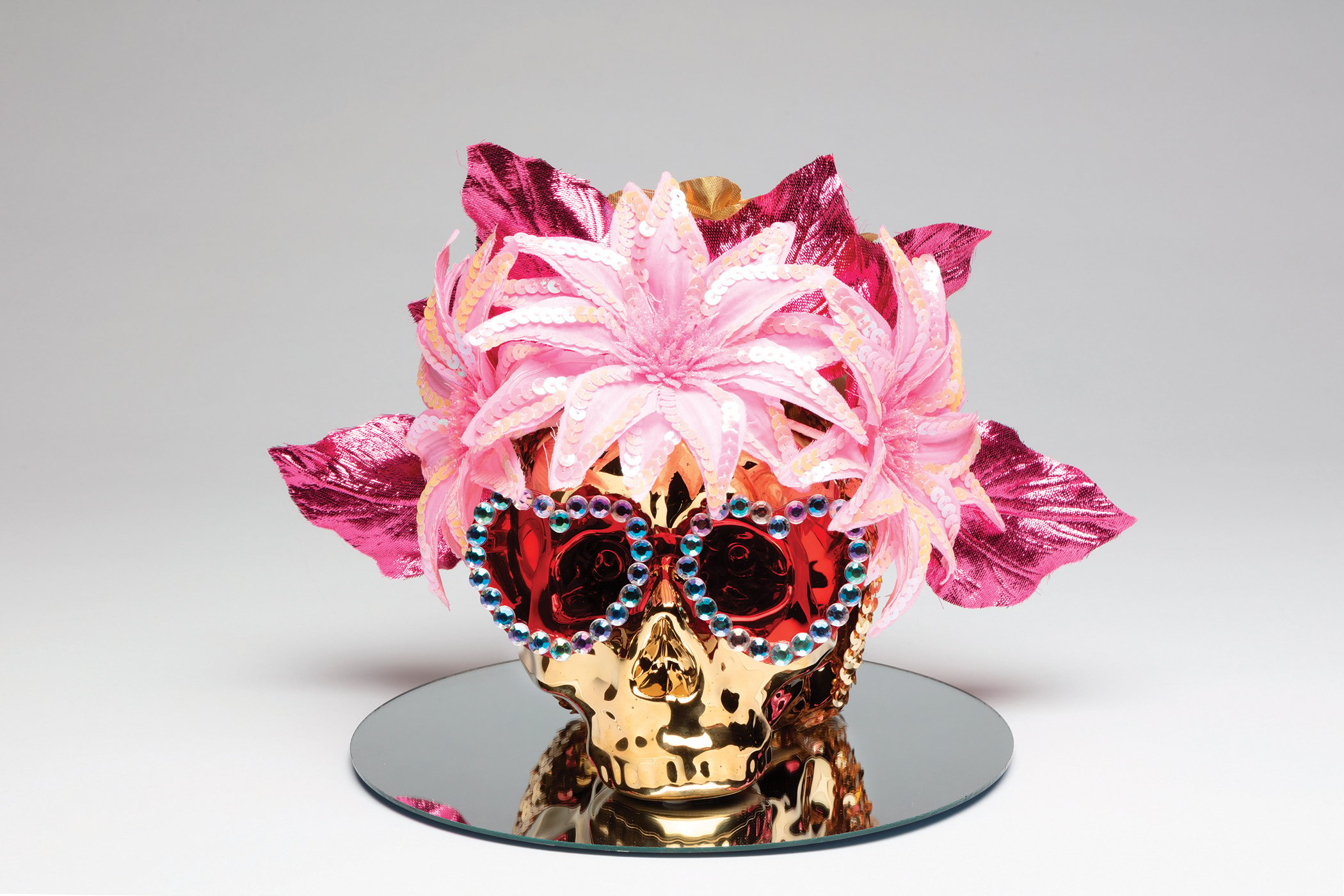
Betsy Parsons, who has served on the museum’s board for eight years, takes that ethos to heart. She and her husband own a handful of buildings downtown, but the crown jewel is the historic Whitney Theatre, a prohibition-era movie theater they’ve renovated as a dance studio for 150 students. One afternoon in May, a gaggle of elementary-age girls in leotards tap-danced downstairs as Parsons stood on the Whitney’s second-story balcony, watching livestock trailers bump and rattle along the road below.
“You want to change with the times appropriately while you honor the past,” she said. Many folks in town applaud her efforts to renovate the Whitney and other historic downtown buildings, including a structure down the street that Parsons is transforming into a hotel. Now and then she runs into opposition, she said, like when an old-timer descended on her as she was drawing up plans to renovate the Whitney, urging Parsons not to change its historical character. “She was adamant. And that’s OK,” Parsons said. “But there’s a point where you can’t continue to drive the horse and buggy … You want to consider other people’s feelings, but you don’t want to isolate yourself to the point where you’re stagnant.”
Albany residents have successfully resisted joining the 21st century in several memorable fights. The town is one of a few left in the state where you can’t buy alcohol; a measure to legalize its sale was recently up for a vote, but failed. Townspeople remember when picketers outside of Brookshire’s—the local grocery store that supported in-town alcohol sales—grew loud enough for police to ask them to quiet down. Then there’s the time that Walmart came to Albany with a plan to build a new store on the highway. “We don’t want you here!” folks hollered at company execs during a town hall meeting, area rancher John Caldwell remembered. Walmart retreated and hasn’t been back.
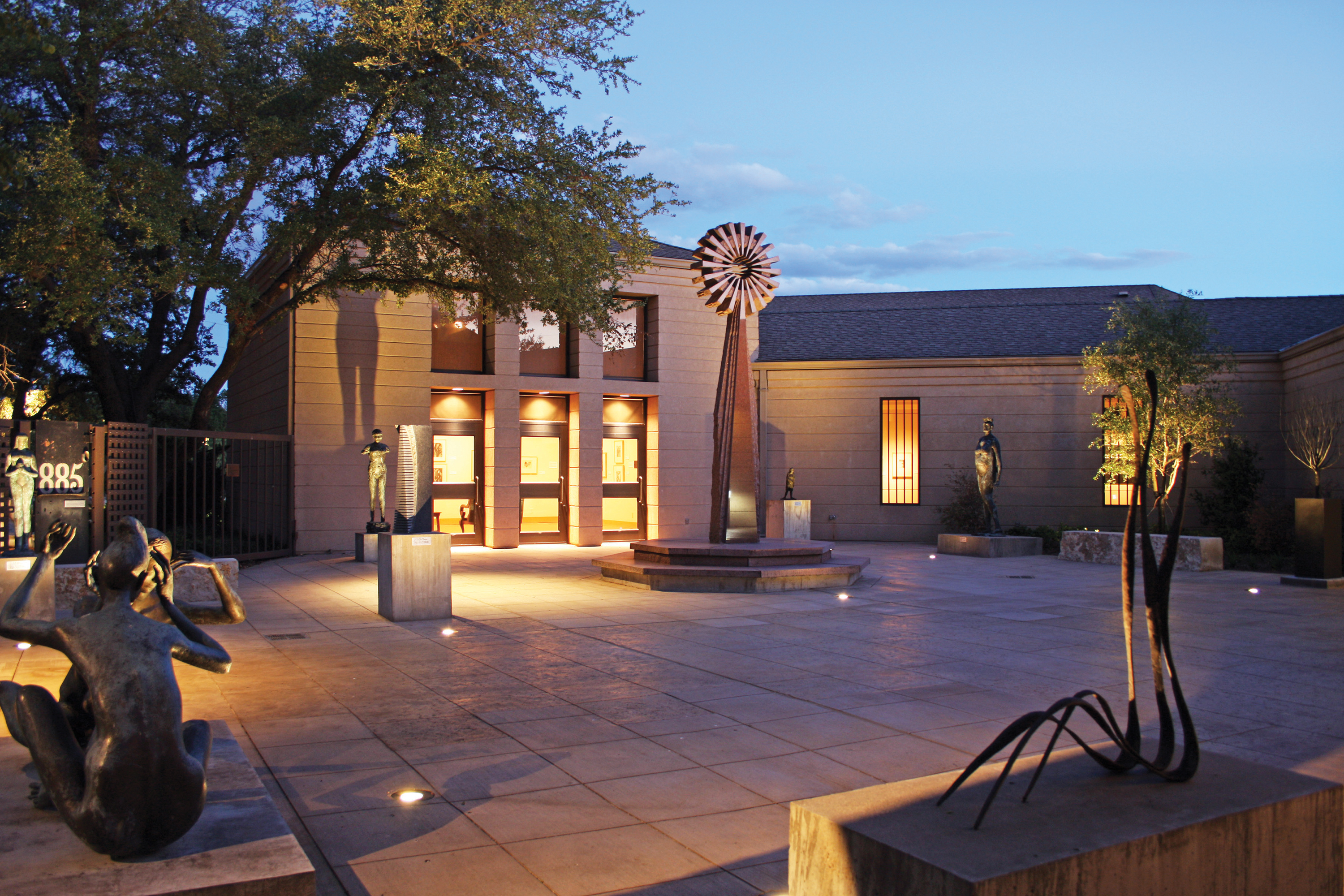
On a school tour of the museum in May, the old jail structure predictably drew some nervous laughter and wide-eyed glances from a group of Abilene middle-school students. But they seemed to react more strongly to the art. “That’s really cool,” one boy said to his classmates near the museum’s foyer, pointing to a picturesque Western landscape marred with red smears of paint across the foreground. The students were equal parts intrigued and disgusted when their tour guide explained that a stunning, 8-foot-tall portrait of a Catholic bishop from the Congo was composed entirely of thousands of iridescent beetle casings. “That’s disgusting!” one kid hollered.
Waller, the board president, said he’s especially proud of a series of mini-documentaries the museum began producing last year. One of these oral histories covers Robert Nail Jr., who also created the Fort Griffin Fandangle, a long-running outdoor musical interpreting the area’s frontier past.
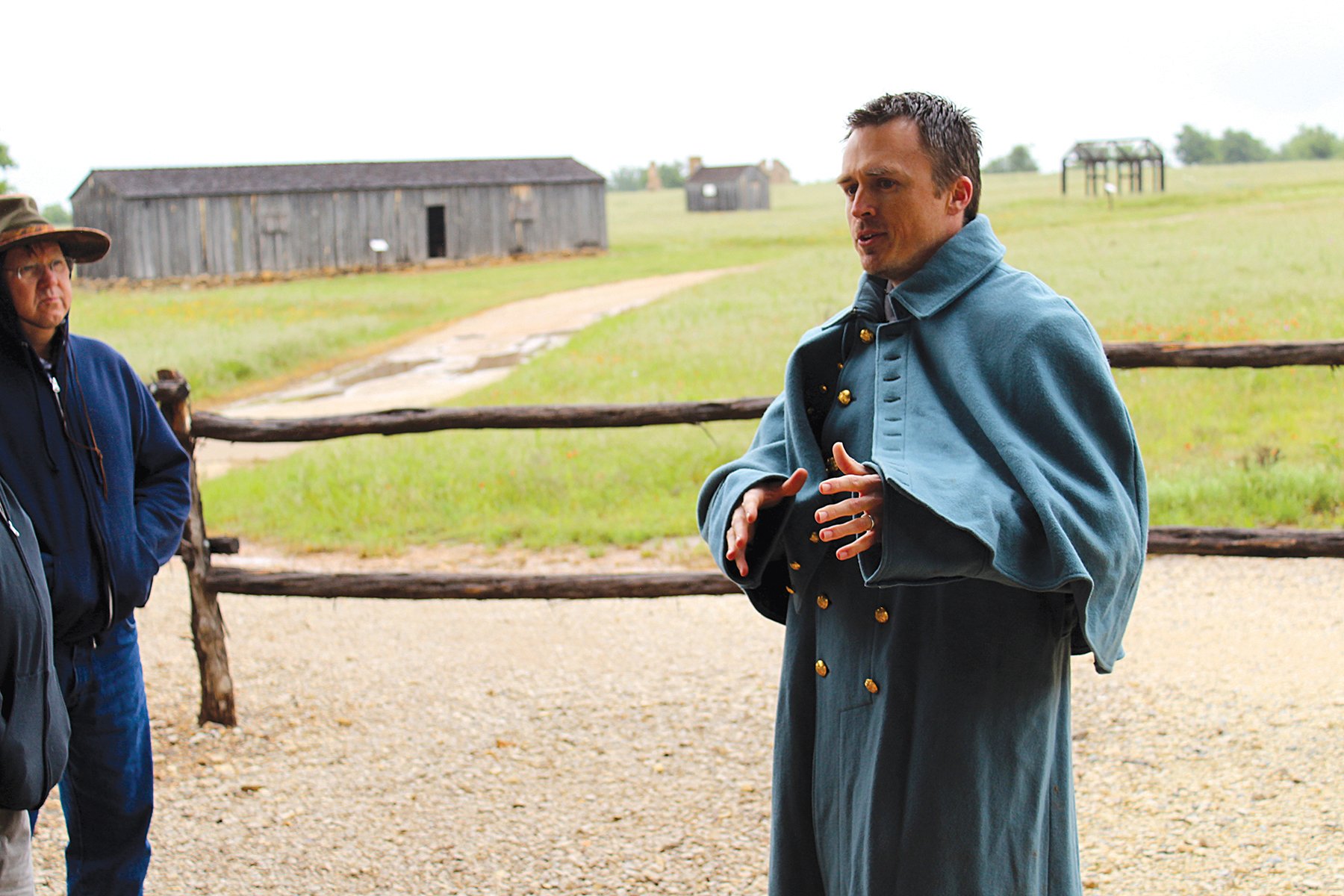
Waller said he thinks the museum’s efforts to preserve and interpret regional history help to connect folks with the past without fetishizing it. People in Albany don’t revere their past so much as remember it; they relate the extrajudicial killing of Larn with the same matter-of-factness as they do the fortuitous discovery of crude underneath the Cook Ranch in 1926, which led to the founding of Cook Children’s Medical Center in Fort Worth. “In the past, we made mistakes. But if you know history and follow history, then you can look into the future a little bit,” Waller said.
On the museum’s ground floor, Bale Creek Allen’s My America is on display through August 24. Allen is an Austin artist best known for gilding tumbleweeds in gold and bronze. The photos in the show depict scenes most people would ignore: an empty mobile home surrounded by weeds, a row of cell phone towers disguised as palm trees. A shot of a snow-cone stand shaped like Santa Claus, abandoned in a parking lot, is equal parts creepy and comic. Forgotten rural places, the show suggests, are full of treasures—if only you know where to look.
READ MORE:
-
Plight at the Museum: The best Texas history museum you’ve never heard of is staring down a financial crisis. Will it survive?
-
The Clothes that Make the Man: Jose Villalobos’ art redresses the macho traditions of norteño culture.
-
At Home in the World: Houston artist Prince Varughese Thomas blurs boundaries of politics, medium and identity.
-
Ghosts of the Baker Hotel: What does it take to revive a struggling small town?
-
Washington Crossing the Rio Grande: Performing patriotism in Laredo while Trump’s wall looms.



